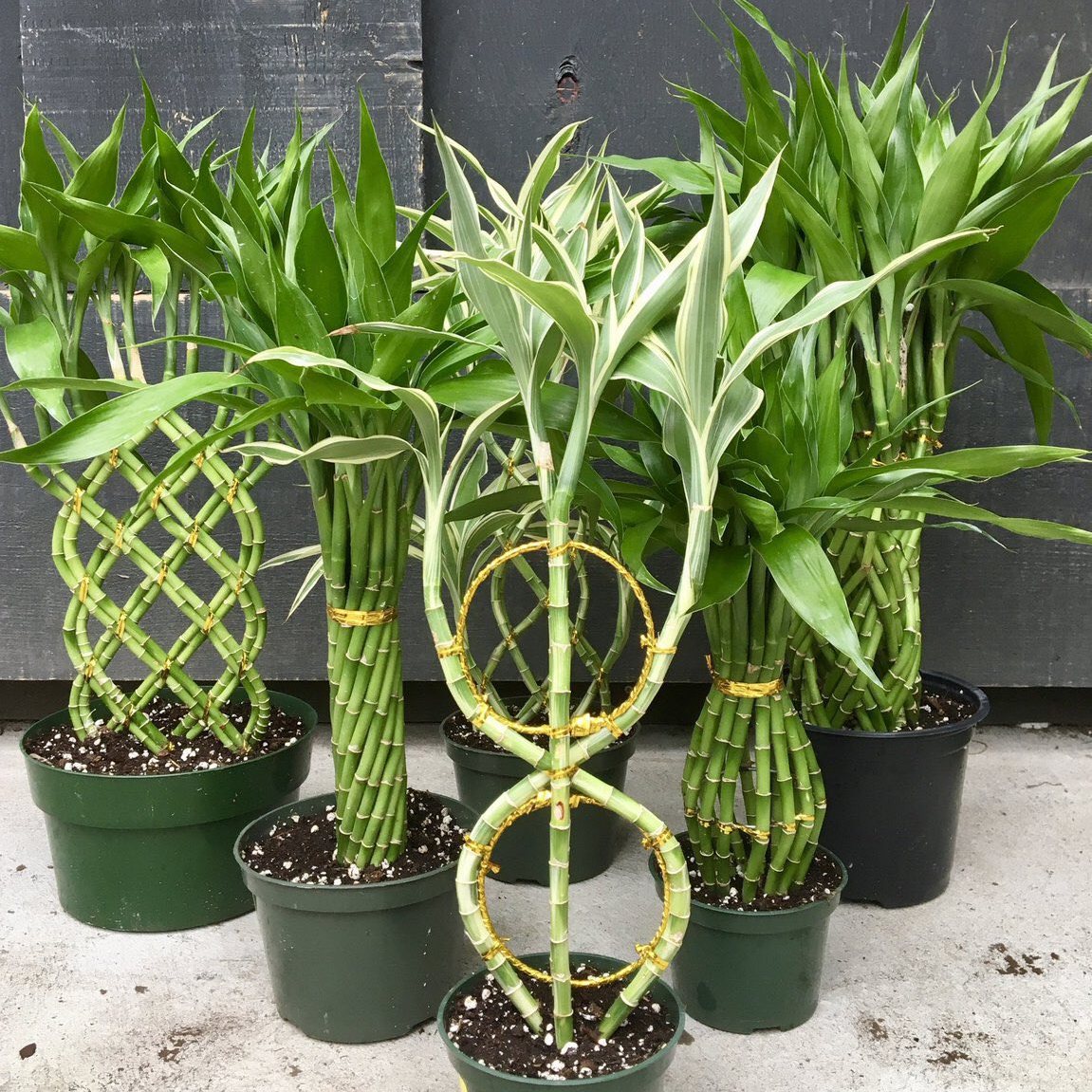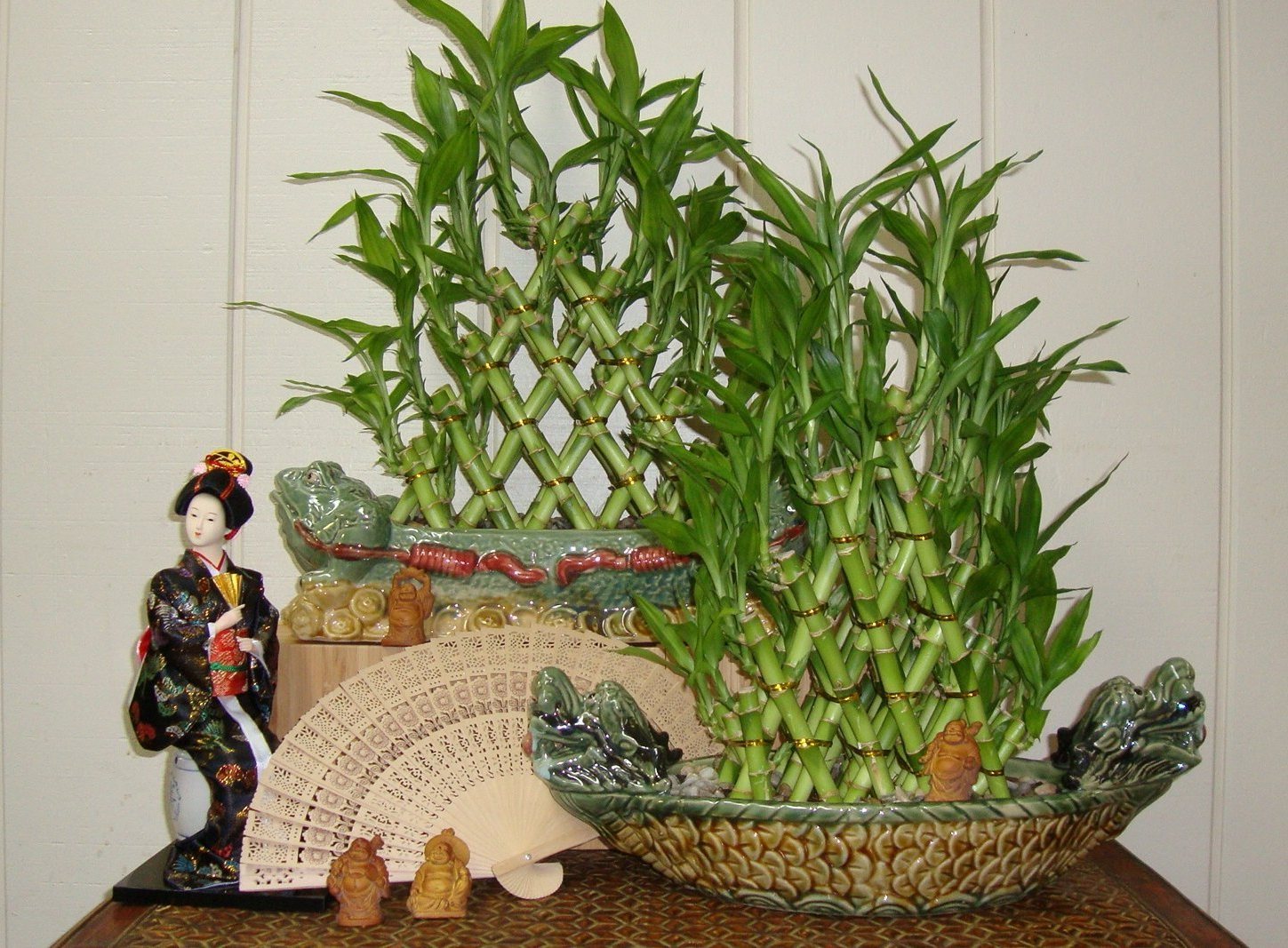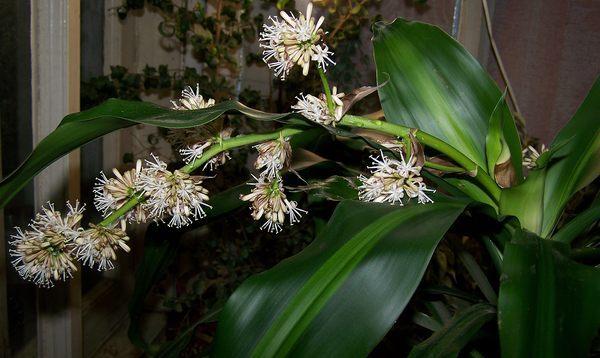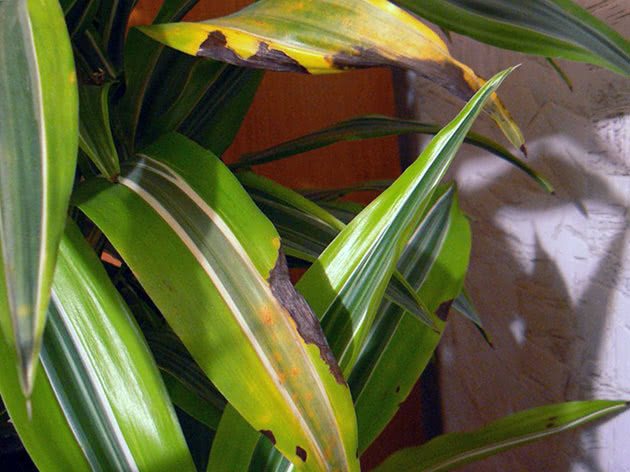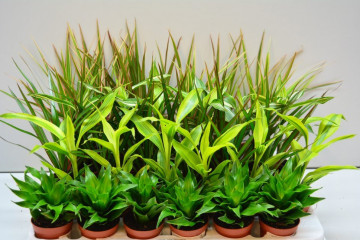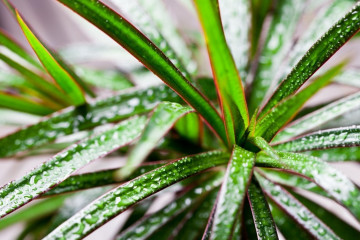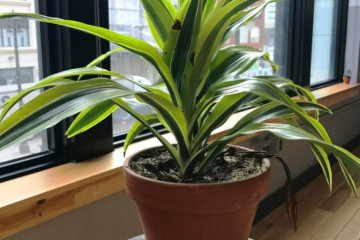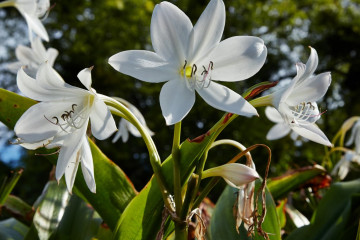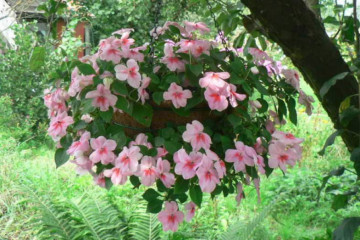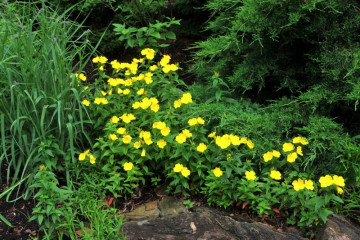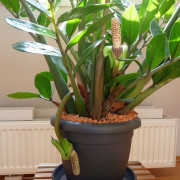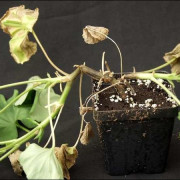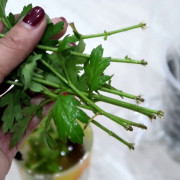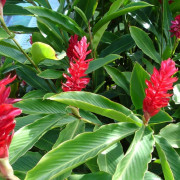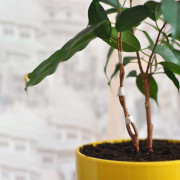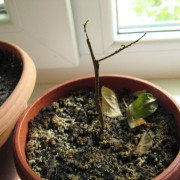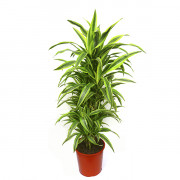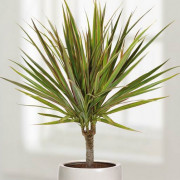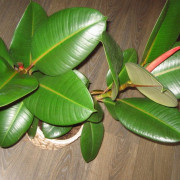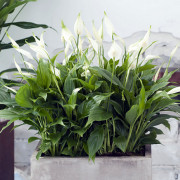Dracaena Sander flower - planting and care
Content:
Dracaena Sander, dragon tongue or false palm is an indoor herb that is also called bamboo. It is often used as a souvenir or a gift for a wedding or housewarming.
Appearance and history
Sandera is the most common Dracaena variety, which previously belonged to the Agavov family. The color of the leaves of the plant is usually light green, but some representatives may have dark green or yellow-bordered leaves. They have an elongated lanceolate shape, reach 3 cm in width and 25-30 cm in length.The plant height is 100 cm.
The culture can be given any shape, it is enough to place the shoot in a special device that is sold in flower shops.
In the modern world, such a plant should become a faithful friend of man. Bamboo absorbs all possible radiation from a computer and other equipment in the house. A flower more than 65% purifies the air from chemicals harmful to humans, destroys bacteria and microorganisms, and just saturates it with oxygen.
How to care for Dracaena Sanderian at home
Caring for dracaena bamboo at home is not particularly difficult, since it is an unpretentious plant.
The plant needs the most common lighting, but without direct sunlight. It can even be a bathroom or other room with a small amount of light, because the dracaena can survive even without it.
Watering is carried out when the top layer of the soil dries up, but care must be taken that the water does not stagnate, and as a result, the roots do not rot.
As a soil-soil for dracaena "lucky bamboo" is usually used a special mixture, which is sold in flower shops. Sand mixed in equal parts with flower soil is also suitable. There should be small stones at the bottom of the pot to ensure drainage.
Top dressing for dracaena is very needed in the spring-autumn period. It is necessary to fertilize it at this time 1 time in 3-4 weeks. Basically, they use water-soluble fertilizers marked "For dracaena".
Winter care
Sandera's resting period begins in November and lasts until February. At this time, there is no need to fertilize the plant, it is resting. There is no special care in winter, you just need to expose the bamboo to the sun in clear weather.
Dracaena Sander bloom
During flowering, green spikelets appear, which later turn golden. In captivity, the plant does not bloom. Yes, and in the natural environment too. And if it blooms, then it happens extremely rarely, in the summer months. The flowers are lancet and small, pale pink or just white, in capitate inflorescences. Unfortunately, the plant dies after flowering.
How to properly trim Dracaena Sanderian
In order for the dracaena to look well-groomed, you need to monitor it and form a crown in a timely manner. It is best to prune in the spring, but if there is an urgent need, then you can do it before the end of summer. The flower should be 30 cm tall. The algorithm is not difficult: retreat 5-6 cm from the lowest leaves, then make a cut.
Reproduction
Dracaena Lucky Bamboo can be propagated in different ways.
Reproduction with dormant buds
To implement this method, you need to place shoots in water, and when roots appear on them, plant them in a pot.
Air layering
The method with air layering is quite energy-intensive. It is necessary to make a T-shaped incision under the leaf scar, reaching the middle of the stem, and then place the wire inside. When the roots grow, you need to separate the cutting and transplant it into a pot with a mixture of peat and sand (2 to 1).
Rooting cuttings
Before rooting cuttings in the ground, they must first be moistened. When rooting in water, an activated carbon tablet should be added to the liquid. In all cases, after the procedure, they are planted in a pot with a sand-peat mixture.
Transplant
After a month from the date of purchase of the flower, you need to transplant it into a larger pot. After that, the procedure is performed every 2 years.
Procedure:
- Place drainage (pebbles) in a new pot and add potting soil.
- Remove the dracaena from the shipping pot and examine the roots. They should not have a root sponge - a fungus that destroys plants.
- Move Sandera to a new pot, sprinkle with soil, but do not tamp.
Diseases and difficulties of growing
When growing dracaena Sander "bamboo of happiness", the owners face the following problems:
- The tips of the leaves dry out or they turn pale. This is a consequence of high humidity and high temperature in the room, as well as a lack of lighting.
- Falling of the lower leaves. This is how the natural aging process of the flower manifests itself. You don't need to do anything.
- Dropping leaves and buds. This is a sign of root decay. Transplant the plant as soon as possible.
Pests
Significant damage to the flower is caused by harmful insects: aphids, spider mites, thrips and mealybugs. You need to deal with them using folk methods. But if the lesion is too large, then it is necessary to use chemicals.
Signs and superstitions
There are a lot of signs associated with dracaena, since they began to consider it a "happy bamboo" back in ancient China.
Dracaena bloom
If a dracaena bloomed in the house, then very pleasant events should be expected soon. But if the plant got sick for no reason, then soon someone will leave the house.
If dracaena is a gift
Dracaena, presented as a gift, brings good luck, health, longevity and well-being.
How many dracaena stems to give
In no case should you give 4 stems - this is unfortunate. It is much better if there are 9 or 7 of them.
Folk omens
The people believed that dracaena Lucky Bamboo strengthens the inner strength of a person, helps children grow up kind and strong, and provides an increase in family income.
Dracaena Sander is a fairly large plant with an ancient history that does not require special conditions of maintenance, rarely blooms and is not prone to disease.Its appearance has a beneficial effect on the atmosphere in the house. The flower absorbs all harmful substances and cleans the space of negative energy. However, one cannot say that dracaena is bamboo. In addition to external similarities, these plants have nothing in common.
